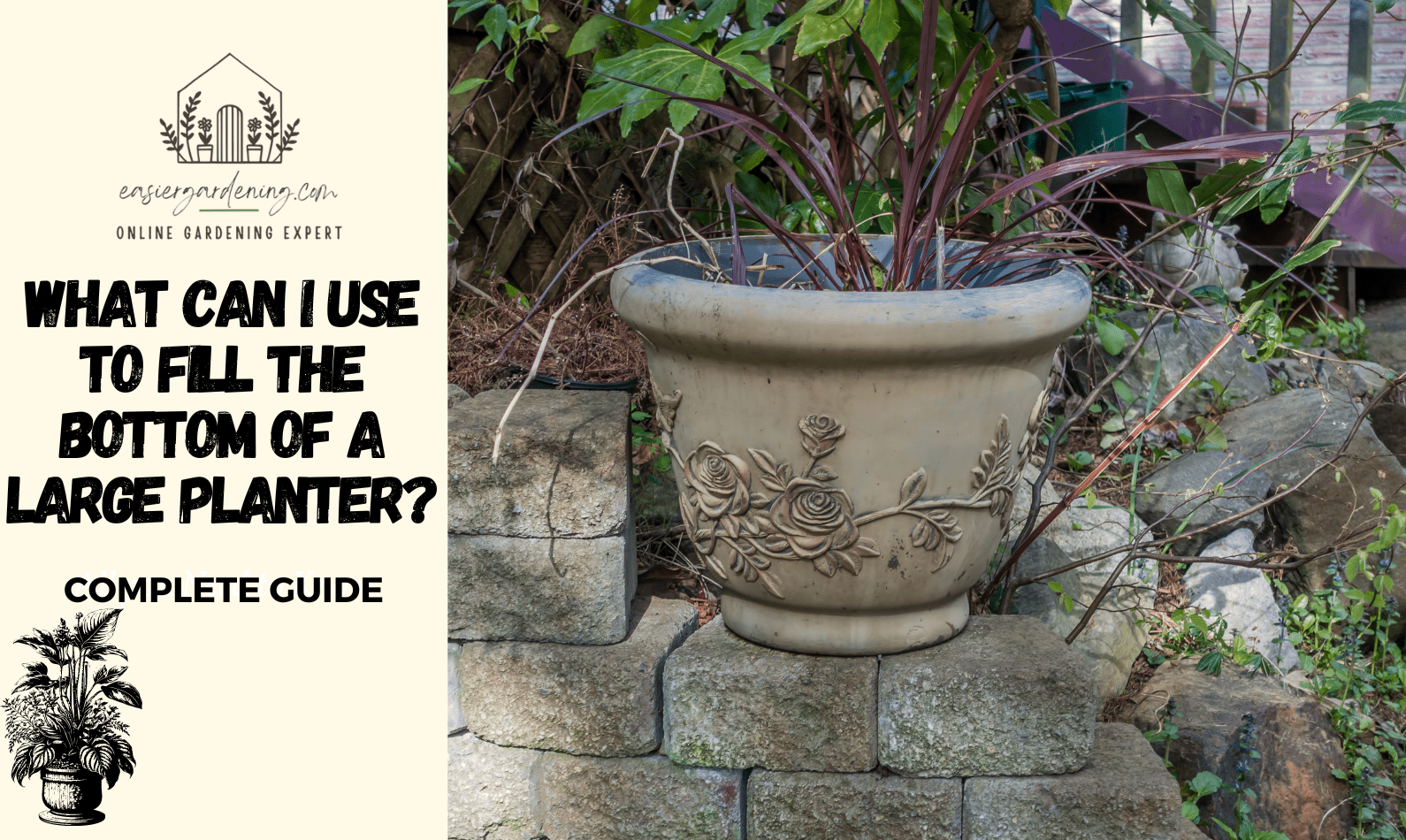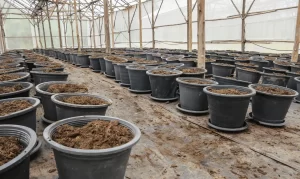Large Planter Preparation: What Can I Use to Fill the Bottom of a Large Planter? Large planters are essential for your garden because they provide bigger plants and ensure proper ventilation. Also, some unique large planters enhance the aesthetics of your garden. When you start preparing for planting, planters are the first to give attention. And if your planter is large, it needs extra attention while filling the bottom of it.
Usually, people fill a planter with soil. But filling a large planter with soil can be expensive, and it takes a lot of soil to fill a large planter. So, it is pretty common to wonder, “What can I use to fill the bottom of a large planter?” You may be busy finding the cheapest way to fill planters. But, Don’t worry, in this article we will give you some ideas about the things you can use to fill the bottom of the large planter.
Contents
What Can I Use to Fill the Bottom of a Large Planter?
Before you fill up your large planter, you need to know how much soil your plants need to grow. Typically, one-quarter to one-third of the bottom of the pot is used as filling. Learn about your plants on the Internet, or ask your local garden center how deep your plants’ roots are. Find out how much soil your plants need at least to grow.
Read more about Best Koi Pond Filtration System Setup.
In addition to the obvious benefit of saving money to buy potting soil, there is another benefit to using filling materials. Lightweight materials can reduce the overall weight of flower pots because they are barge than soil. Your planter will remain heavy, but not as heavy as if you fill it up entirely with soil. It can also help drainage.
Expert Tips: If your flowerpot does not have drainage holes, we strongly recommend creating some. It is easy to drill holes in plastic or resin containers with ordinary drills. Just drill a few holes in the bottom of the flowerpot. If you are worried about cracks, you can put a few pieces of painter’s tape on the spot where you want the hole.
-
Preparation of the Pot
Drainage is sometimes overlooked. But it is essential to know what to put in the bottom of a planter for drainage. Any plants in the container need to be drained. You might think that the lack of drainage holes means that you have to reduce the watering number, and you are right. However, if you tend to overwater, root rot may affect your plants. If your plant is outdoors and rains heavily, it will get rotten through the roots. When selecting materials, be sure to ensure that they can drain.
Before you put anything in the pot, you need to ensure that there is at least one hole in the bottom so that the water can drain normally. Even if you fill the bottom of the planter with materials that improve drainage, there must be a place where excess water can be drained away. If it is discharged from the soil and becomes a layer of gravel or other material, the water will quickly stagnate and promote root-killing bacteria and mould growth.
Expert Tips: A clay pot requires a masonry drill. Start from 1/4 inch and go to 1/2 inch. The clay pot may crack if the hole drilled at once is too large. You need at least four drainage holes for large planters. But Six drainage holes are ideal.
-
Lightweight Materials to Use
Light and heavy materials are the best choices if you have a particularly large planter to install. Examples include filling the large planter with plastic bottles, milk jugs, crushed soda cans, foam packaging materials, and plastic or foam takeaway containers. You can get the best results by combining items. Just make sure that the thing does not rot. You can also use foam balls and building blocks from a handmade shop’s flower department, but these items can be costly, especially if you need a lot.
Expert Tips: Clean the items to ensure no food residues, and fill the container’s bottom with a quarter to a third of the filling material.
What Are the Other Options to Fill the Bottom of a Large Planter?
When you have the question in mind, “What can I use to fill the bottom of a large planter?” you can go with some other fillers besides lightweight materials. If you don’t mind having the pot a bit heavy, you can use gravel, river rock, or mud to fill the planter. Lighter natural options include sphagnum moss, coconut fiber, and fine-grained sand. In the garden shop’s hydroponics department, you can find mud balls and other soilless cultivation media suitable for planting, and you can also use them as fillers.
Expert Tips:If you use moss or sand, it can compress and become part of the soil, making it unsuitable for certain types of plants and flower pots, but if you already have some plants on hand, it can work in emergencies.
Tips for Using Fillers
Since your filling material takes up at least a quarter to a third of the planter, you need to make sure it is healthy for your pants and can stand the test of time. The University of Illinois recommends using inert materials that do not react with the soil. If you use bulky objects as filling materials, nets or landscape fabrics can help stabilize the soil.
Expert Tips: Avoid easily decomposable materials, such as newspapers, cardboard, paper cups, etc. They will cause soil compaction and sink over time and introduce bacteria and mold into the soil as it decomposes.
Final Thought: What Can I Use to Fill the Bottom of a Large Planter?
When it comes to filling a large planter, you have various options to use. Depending on your plant’s type, you can use different items from heavier to lighter, from old recycled items to foam & packing materials. Even the comparative smaller flower pots being upside down can work perfectly while trying to fill the large ones.
Hopefully, you got the answer to “What can I use to fill the bottom of a large planter?”. We have discussed several methods here; you can use whichever works best for you. Just be cautious while choosing the items to fill your planter so that it doesn’t become a reason to ruin your plant.



